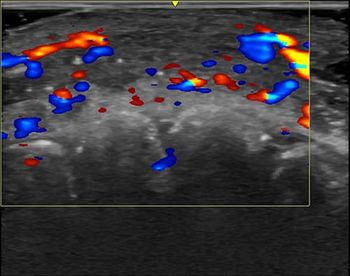
Using Cardiac CTA Before TAVR to Assess Left Atrium Parameters May Predict Mortality
Cardiac CTA before transcatheter aortic valve replacement can be used to better determine risk by assessing left atrium functional parameters that are predictive of mortality.
Assessing left atrium parameters through cardiac CTA before transcatheter aortic valve replacement may predict mortality in patients with severe aortic stenosis, a recent study found.
The study, published in the
“The CT scan performed routinely before every TAVR could be used more extensively than it is currently,” Gilberto Aquino, MD, of the Medical University of South Carolina told Diagnostic Imaging. “By extensively assessing a structure that is already included in the scan, such as the left atrium, we could improve pre-TAVR risk stratification and post-TAVR monitoring without added patient radiation exposure.”
The median age of study participants was 79 and 52.6% were men. Within 24 months after TAVR, 38 patients (21.7%) died. Investigators calculated maximum left atrium volumes (LAVImax) and minimum left atrium volumes (LAVImin). LAEF was automatically calculated. Cox regression was performed to determine which parameters were predictive of mortality.
Clinically, increased LAVImax and LAVImin and decreased LAEF -- most commonly assessed using transthoracic echocardiography -- are associated with a higher risk for heart failure, atrial fibrillation and stroke, the authors noted.
In univariable analysis, all three parameters were predictive of mortality. But only LAEF independently predicted mortality after adjusting for clinical parameters (hazard ratio 0.97 [0.94-0.99]; p=.02).
“We were surprised to find that only left atrial function, represented by left atrial emptying fraction (LAEF) in our study, was independently associated with mortality after TAVR, while volume parameters such as maximum and minimum left atrial volumes were not independently associated when adjusted for confounders,” Aquino said. “However, considering that our patient population had severe aortic stenosis, their baseline volumes might have been chronically increased at baseline, and thus, only functional impairment was able to effectively differentiate those at higher or lower risk for mortality after TAVR.”
The study evaluated left atrium parameters using predictive clinical variables and the Society of Thoracic Surgeons Predicted Risk for Mortality (STS-PROM). Adding the parameters to STS-PROM improved the ability of the model to predict mortality.
“The increasing popularity of TAVR should be met with improved risk stratification and post-treatment surveillance, and using a readily available CT scan beyond its typical use for valve sizing and peripheral access route evaluation could provide more information than is currently used in clinical practice,” Aquino said.
Limitations of the study include the limited temporal resolution of cardiac CTA-derived left atrium parameters. The advanced age of the participants also may have resulted in other causes of death confounding the assessment.
Ongoing advances in artificial intelligence-assisted assessment are anticipated.
“Ultimately, with the increasing frequency of TAVR, the goal is to maximize the use of imaging to improve pre-TAVR risk stratification by assessing multiple structures, such as the cardiac chambers, coronary arteries, pulmonary artery, muscle mass, and epicardial, subcutaneous and visceral fat,” Aquino said. “This could allow the creation of a comprehensive CT risk score for TAVR that would help determine which patients require closer monitoring.”
Newsletter
Stay at the forefront of radiology with the Diagnostic Imaging newsletter, delivering the latest news, clinical insights, and imaging advancements for today’s radiologists.




























